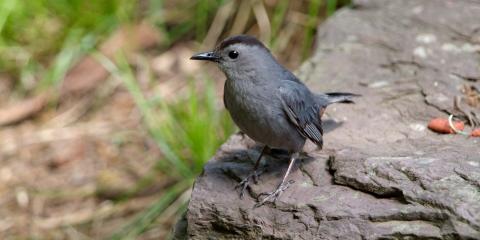News Archive
Filter By
- Abyssinian ground hornbill
- Addax
- Aldabra tortoise
- Allen's swamp monkey
- Alpaca
- American alligator
- American avocet
- American bison
- American flamingo
- American wigeon
- Andean bear
- Aquatic caecilian
- Arapaima
- Asian elephant
- Asian small-clawed otter
- Asian water dragon
- Australian snake-necked turtle
- Bald eagle
- Baltimore oriole
- Barred owl
- Bearded emperor tamarin
- Beaver
- Bennett's wallaby
- Binturong
- Black-and-white ruffed lemur
- Black-crowned night heron
- Black-footed ferret
- Black-tailed prairie dog
- Black-throated blue warbler
- Blue-billed curassow
- Blue crane
- Bobcat
- Brown pelican
- Bufflehead
- California sea lion
- Canvasback
- Cedar waxwing
- Channel catfish
- Cheetah
- Chicken
- Chinese alligator
- Chinese three-striped box turtle
- Clouded leopard
- Collared brown lemur
- Common raven
- Common yellowthroat
- Corals and sea anemones (anthozoa)
- Cow
- Crocodile monitor
- Cuban crocodile
- Dama gazelle
- Degu
- Dunlin
- Eastern corn snake
- Eastern indigo snake
- Eastern newt
- Eastern red-backed salamander
- Eastern screech-owl
- Eld's deer
- Electric eel
- Emperor newt
- Fennec fox
- Fishing cat
- Gaboon viper
- Geoffroy's marmoset
- Gharial
- Giant leaf-tailed gecko
- Giant panda
- Goat
- Golden-headed lion tamarin
- Golden lion tamarin
- Gray seal
- Gray wolf
- Green tree python
- Grevy's zebra
- Guam kingfisher (sihek)
- Guam rail (ko’ko’)
- Guinea pig
- Harbor seal
- Hartmann's mountain zebra
- Hawk-headed parrot
- Hellbender
- Home's hinge-back tortoise
- Hooded crane
- Iranian fat-tailed gecko
- Japanese giant salamander
- King vulture
- Komodo dragon
- Kori bustard
- Kunekune pig
- Land hermit crab
- Larger Malay mouse-deer
- Lemur leaf frog
- Lesser hedgehog tenrec
- Lesser kudu
- Lion
- Loggerhead shrike
- Long-tailed chinchilla
- Long-tailed salamander
- Maned wolf
- Meerkat
- Miniature donkey
- Naked mole-rat
- North American porcupine
- North American river otter
- Northern Luzon giant cloud rat
- Northern pine snake
- Northern pintail
- Northern red salamander
- Northern snakehead fish
- Northern tree shrew
- North Island brown kiwi
- Norway rat
- Orangutan
- Orchard oriole
- Ossabaw Island hog
- Ostrich
- Ovenbird
- Pallas's cat
- Panamanian golden frog
- Patagonian mara
- Persian onager
- Philippine crocodile
- Prehensile-tailed porcupine
- Prevost's squirrel
- Przewalski's horse
- Pygmy slow loris
- Red-crowned crane
- Red-fronted lemur
- Red-rumped agouti
- Red-winged blackbird
- Red knot
- Red panda
- Red River hog
- Red ruffed lemur
- Red wolf
- Ring-tailed lemur
- Ruddy duck
- Schmidt's red-tailed monkey
- Scimitar-horned oryx
- Screaming hairy armadillo
- Semipalmated plover
- Semipalmated sandpiper
- Siamang
- Sitatunga
- Sloth bear
- Southern lesser galago
- Southern swamp sparrow
- Southern tamandua
- Spider tortoise
- Striped skunk
- Tanagers
- Tentacled snake
- Tiger
- Titi monkey
- Turkey
- Twig catfish
- Two-toed sloth
- Vietnamese mossy frog
- Virginia opossum
- Von der Decken's hornbill
- Western lowland gorilla
- White-cheeked gibbon
- White-faced saki
- White-naped crane
- White-nosed coati
- Whooping crane
Displaying 1376 - 1400 of 2363 articles.

Hubbard Brook Expedition Blog
Surveys have been conducted at Hubbard Brook since 1999 to better understand how birds respond to a changing environment.
Treating Shanthi's Arthritis
Born in Sri Lanka around 1975, Asian elephant Shanthi developed arthritis in her front-left leg more than a decade ago. While there is no cure for arthritis, there are ways to alleviate the symptoms, and our animal care experts have focused on her comfort. We'll be posting the latest information on...
Stanley Crane Chick Hatched at the Smithsonian's National Zoo
Bird House keepers at the Smithsonian's National Zoo are celebrating the arrival of a Stanley crane chick, hatched July 10 to the Zoo's 27-year-old female and 17-year-old male. Animal care staff are monitoring the chick closely and report that it appears to be alert and strong, and the parents are...
Smithsonian Science: Elusive Elephant Reproduction
What affects an elephant’s ability to get pregnant? Scientists from the Smithsonian Conservation Biology Institute (SCBI) set out to solve that mystery. With help from peers across North American zoos, they evaluated elephant hormones to learn how body weight, socialization and life events affected...
Science To The Rescue In The #Fightforfrogs
Nearly one-third of all amphibian species globally are at risk of going extinct. While the global amphibian crisis is the result of habitat loss, climate change and pollution, the deadly amphibian chytrid fungus plays a large role in the frogs' disappearances. In the fight for frogs, Smithsonian...
Smithsonian Science Q&A: Tracking Scimitar-Horned Oryx
What happens when a species is restored to its rightful place in the wild? In the case of the scimitar-horned oryx, the answer to that question has been nearly 30 years in the making. Next month, 25 oryx will be released to a large reserve in Chad, a country where they have been extinct in the wild...
The Curious Colonization of the Humboldt Penguin
When it comes to choosing a location for a natural gas marine terminal, PERU LNG (Liquefied Natural Gas) discovered that the options are not always black and white. When their construction site became the home of choice for Humboldt penguins, PERU LNG called upon the Smithsonian Conservation Biology...
Smithsonian Science: A Weight Loss Plan That Works... For Kiwi
For the first time, the Smithsonian Conservation Biology Institute (SCBI)'s kiwi pair are parents! Keeper Wesley Bailey reveals how a strict diet helped dad Ngati Hine Tahi get in shape and resulted in the pair's first chick. This story appears in the July 2016 issue of Smithsonian Conservation...
Zoo to Peru: Andean Bear Adventure
Smithsonian's National Zoo scientists are all over the globe and, most recently, at the peaks of Machu Picchu, Peru! Andean bear curator Craig Saffoe, chief veterinarian Don Neiffer, and Smithsonian Conservation Biology Institute scientist Francisco Dallmeier trekked to South America to share...
Smithsonian Science Q&A: Macaques with Wolfgang Dittus
For nearly 50 years, Smithsonian Conservation Biology Institute primatologist Wolfgang Dittus has studied and lived among the toque macaques in Sri Lanka. In our Q & A, he reveals how family relationships, intelligent behavioral strategies and a healthy environment are key to this species’ survival...
Smithsonian Cheetah Science Q&A
As their native habitat continues to shrink, wild cheetahs are facing a drought of genetic diversity. This is in direct contrast with the population of cheetahs in zoos, which is as genetically diverse as it was 30 years ago because of cooperative and strategically managed breeding programs. The...
Science Q&A: Freezing Coral In Time
Smithsonian Conservation Biology Institute (SCBI) scientists are working furiously to beat the bleaching clock and cryopreserve coral. But, they’ve run into a wall: bleaching is causing coral to produce poor-quality sperm and eggs. In turn, less are able to settle or survive the cryopreservation...
Sea Lion Pup Born at the National Zoo
For the first time in 32 years, the Smithsonian's National Zoo's American Trail team celebrated the arrival of a sea lion pup, born June 26 to 11-year-old mother Calli. Keepers watched the birth in an off-exhibit area and continue to closely monitor the pup, which appears to be nursing, moving and...
Maned Wolves are Back on Exhibit at the Smithsonian's National Zoo
The Smithsonian's National Zoo recently welcomed two new residents to its Cheetah Conservation Station: maned wolves.
Scimitar-Horned Oryx Dies at Smithsonian Conservation Biology Institute
The Smithsonian Conservation Biology Institute (SCBI) humanely euthanized a 1-year-old female scimitar-horned oryx, after sustaining a severe spinal injury on June 25. The yearling inadvertently separated herself from her herd as they were moving from one pasture to another through a chute. In an...

Gray Catbird Expedition Blog
Tagging nearly 100 gray catbirds across their breeding range in Washington D.C., Atlanta GA, Springfield MA and Fort Collins CO.
Smithsonian Study Reveals Precipitous Decline of Genetic Diversity in Wild Cheetahs
The planet's last stronghold of wild cheetahs (Acinonyx jubatus) is losing genetic diversity at an alarming rate according to a new study from the Smithsonian Conservation Biology Institute (SCBI) and partners published June 21 in the journal Biological Conservation. This is in direct contrast with...
Smithsonian Coral Study Highlights Devastating Effects of Bleaching on Assisted Reproduction
Not even pioneering assisted-reproduction techniques can bolster the odds of successful reproduction in bleached coral reefs, according to a new study from the Smithsonian Conservation Biology Institute (SCBI) and the University of Hawaii. The findings, which were published June 17, in Reproduction...
Male Sloth Bear at the Smithsonian's National Zoo Has Died
The National Zoo's senior male sloth bear, 25-year-old Francois, was humanely euthanized yesterday. In human care, sloth bears typically have a median life expectancy of early-to-mid 20s. A final pathology report will provide more information in the coming weeks. Animal care staff had kept a close...
Bornean Orangutan at Smithsonian's National Zoo Is Pregnant
For the first time in 25 years, staff at the Smithsonian's National Zoo are making preparations for the highly anticipated birth of an endangered Bornean orangutan. With a breeding recommendation from the Association of Zoos and Aquariums' Species Survival Plan (SSP), the 19-year-old parents to be...
Elephant Cam at the Smithsonian's National Zoo Gets an Upgrade
Virtual visitors to the Smithsonian's National Zoo will now be able to see its herd of six Asian elephants up-close. The Zoo's high-definition elephant cam was previously stationary and only showed the elephants when they walked in view of the cameras in the Elephant Community Center. The upgraded...
Japanese Giant Salamander Dies at the Smithsonian's National Zoo
A Japanese giant salamander at the Smithsonian's National Zoo died June 6. Keepers had noticed May 25 that the 25-year-old female had been lethargic and was having difficulty maintaining buoyancy, which prompted keepers to notify the Zoo's veterinarians. Despite treatment with antifungal and...
